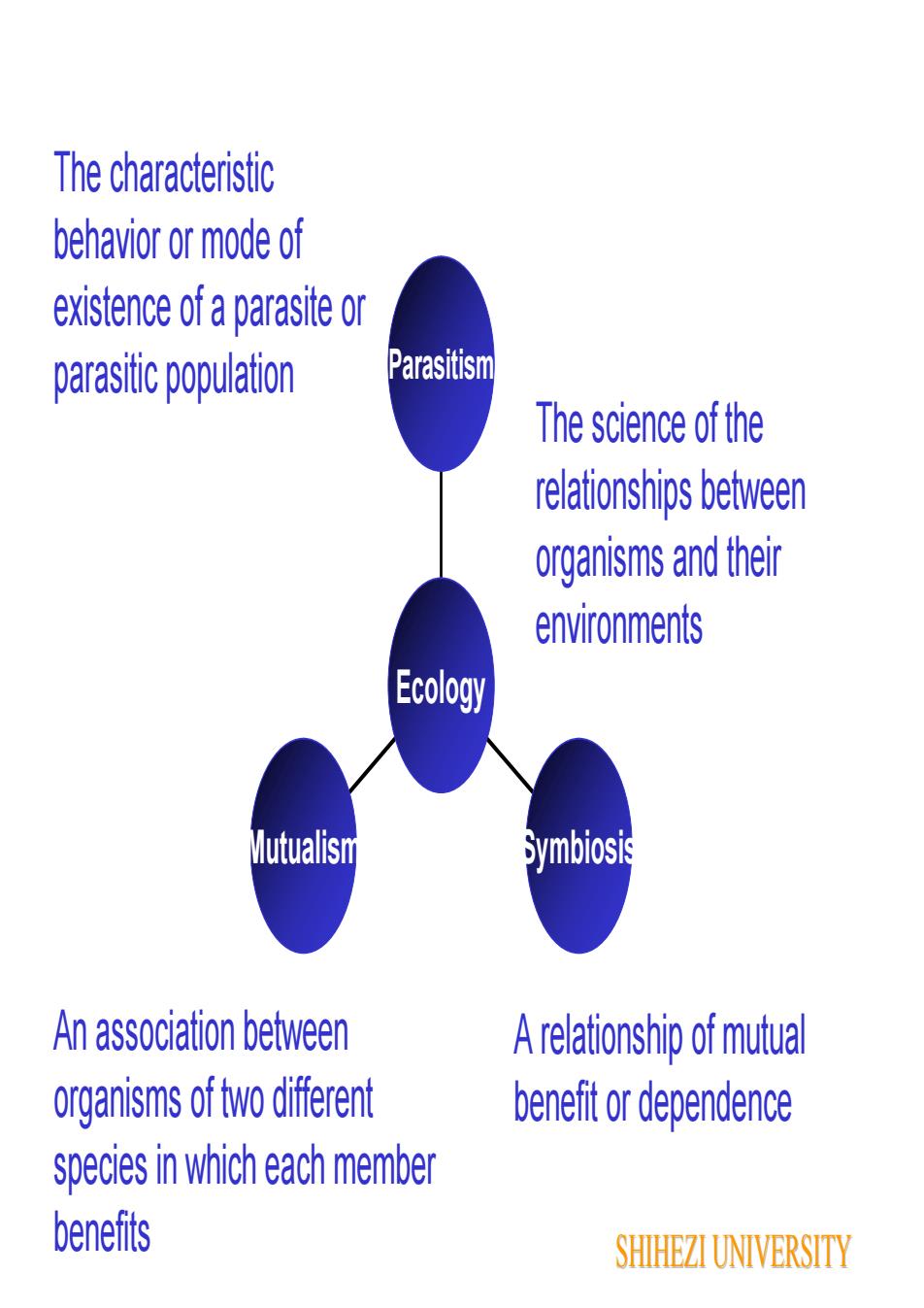
The characteristicbehavior or mode ofexistence of a parasite orParasitismparasitic populationThe science of therelationships betweenorganisms and theirenvironmentsEcologyMutualismSymbiosisAn association betweenA relationship of mutualorganisms of two differentbenefit or dependencespecies in which each memberbenefitsSHIHEZI UNIVERSITY
Mutualism Symbiosis Parasitism Ecology An association between organisms of two different species in which each member benefits A relationship of mutual benefit or dependence The characteristic behavior or mode of existence of a parasite or parasitic population The science of the relationships between organisms and their environments SHIHEZI UNIVERSITY
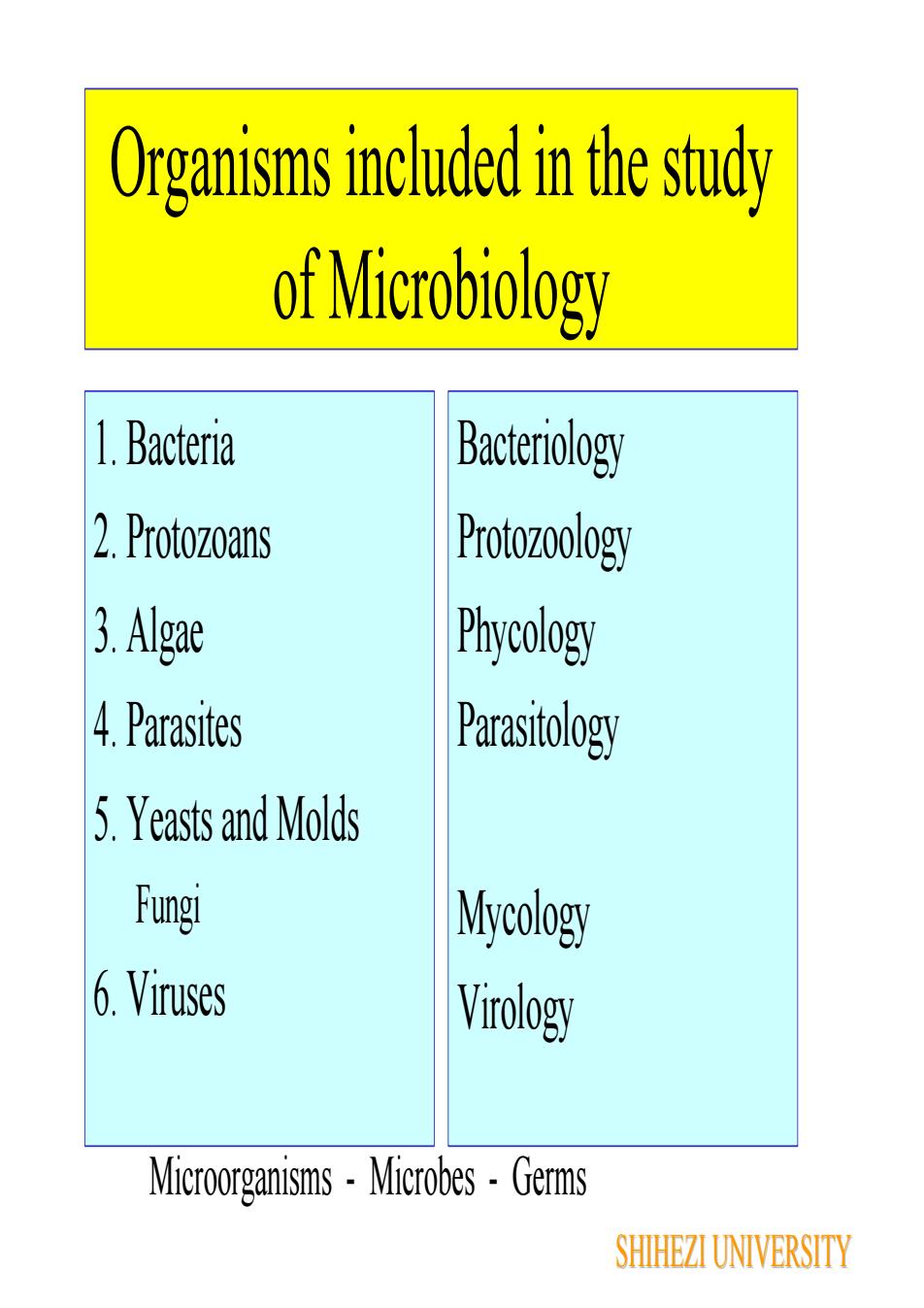
Organisms included in the studyof Microbiology1. BacteriaBacteriology2. ProtozoansProtozoology[3. AlgaePhycology4. ParasitesParasitology5. Yeasts and MoldsFungiMycology6. VirusesVirologyMicroorganisms - Microbes - GermsSHIHEZIUNIVERSITY
Organisms included in the study of Microbiology 1. Bacteria 2. Protozoans 3. Algae 4. Parasites 5. Yeasts and Molds Fungi 6. Viruses Bacteriology Protozoology Phycology Parasitology Mycology Virology Microorganisms - Microbes - Germs SHIHEZI UNIVERSITY
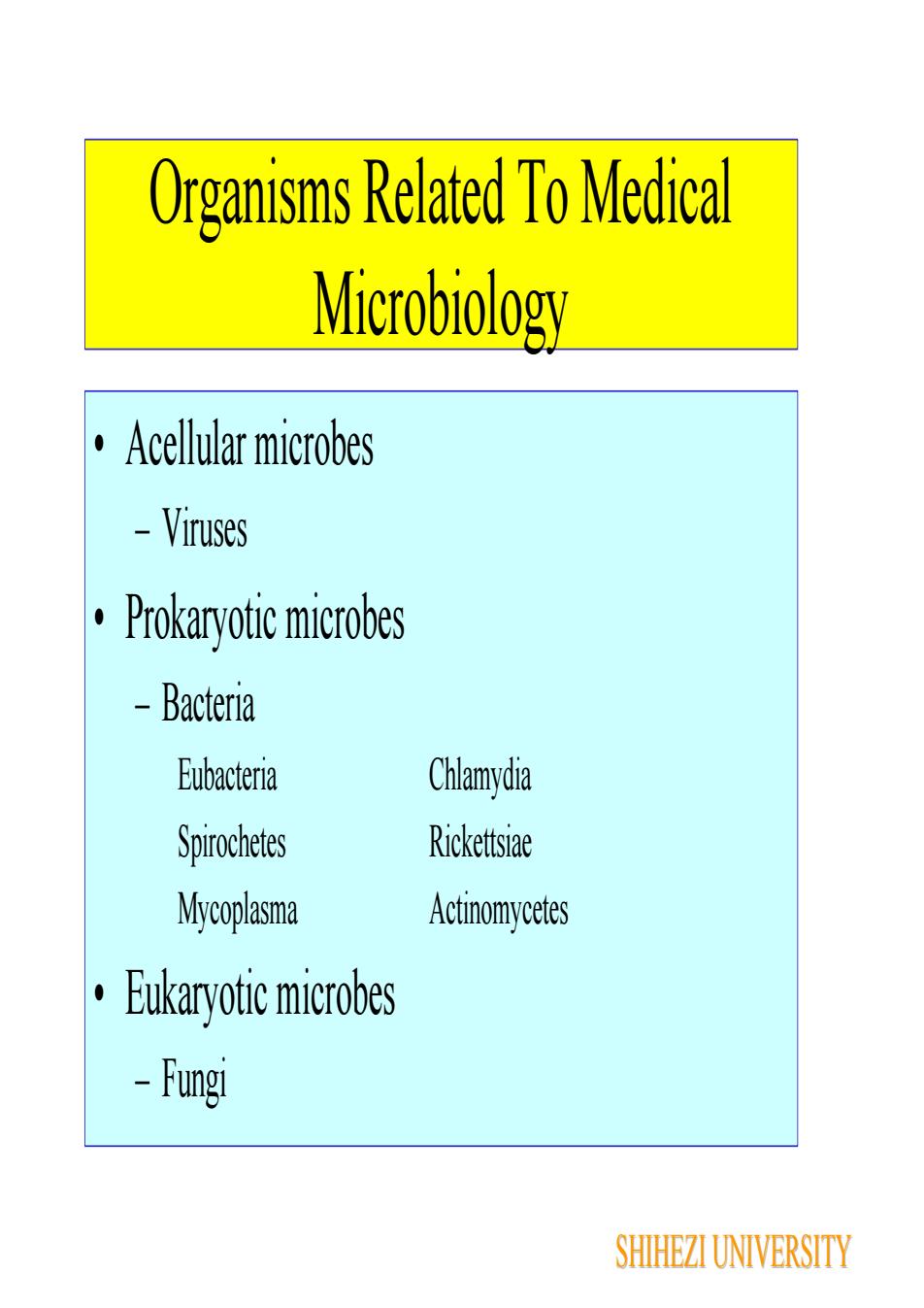
Organisms Related To MedicalMicrobiology? Acellular microbes- Viruses? Prokaryotic microbes- BacteriaEubacteriaChlamydiaRicketsiaeSpirochetesMycoplasmaActinomycetes? Eukaryotic microbes- FungiSHIHEZI UNIVERSITY
Organisms Related To Medical Microbiology • Acellular microbes – Viruses • Prokaryotic microbes – Bacteria Eubacteria Chlamydia Spirochetes Rickettsiae Mycoplasma Actinomycetes • Eukaryotic microbes – Fungi SHIHEZI UNIVERSITY
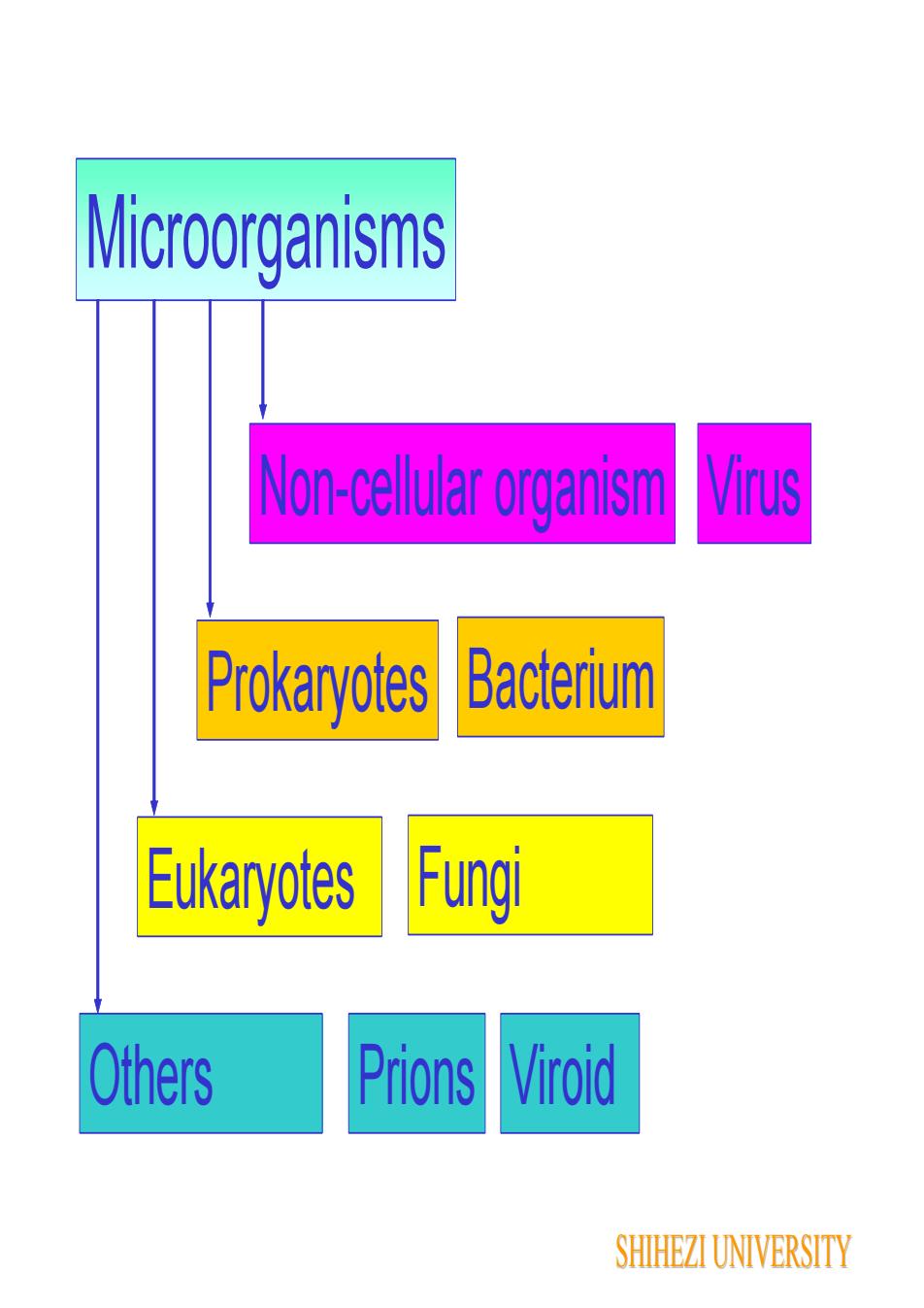
MicroorganismsNon-cellular organismVirusBacteriumProkaryotesFungiEukaryotesOthersViroidPrionsSHIHEZI UNIVERSITY
Microorganisms Non-cellular organism Prokaryotes Eukaryotes Others Prions Viroid Fungi Bacterium Virus SHIHEZI UNIVERSITY
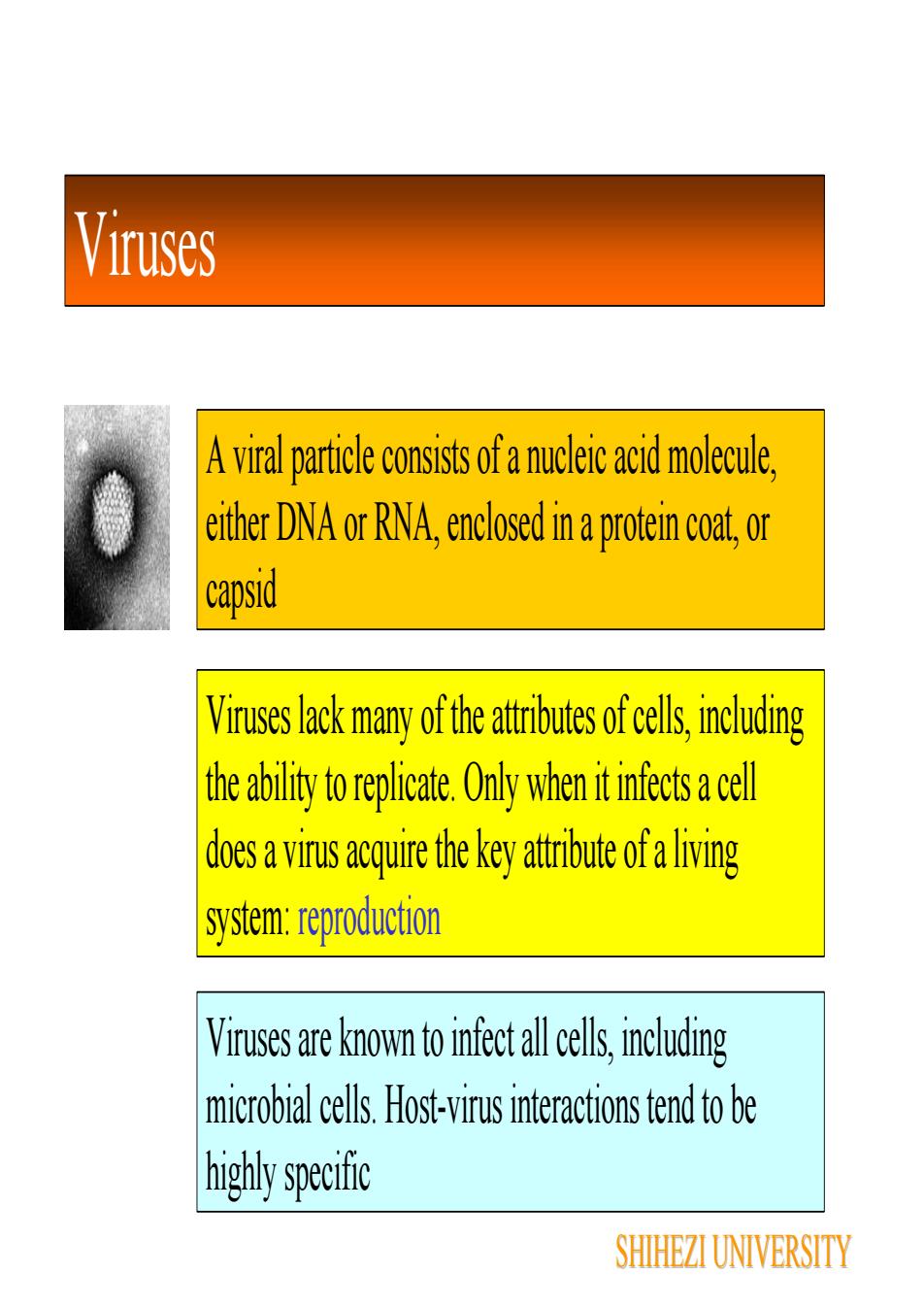
VirusesA viral particle consists of a nucleic acid moleculeeither DNA or RNA enclosed in a protein coat, orcapsidViruses lack many of the atributes of cells, includingthe ability to replicate. Only when it infects a celldoes avirus acquire the key attribute ofa livingsystem: reproductionViruses are known to infect all cells, includingmicrobial cells. Host-virus interactions tend to behighly speificSHIHEZIUNIVERSITY
Viruses Viruses lack many of the attributes of cells, including the ability to replicate. Only when it infects a cell does a virus acquire the key attribute of a living system: reproduction A viral particle consists of a nucleic acid molecule, either DNA or RNA, enclosed in a protein coat, or capsid Viruses are known to infect all cells, including microbial cells. Host-virus interactions tend to be highly specific SHIHEZI UNIVERSITY